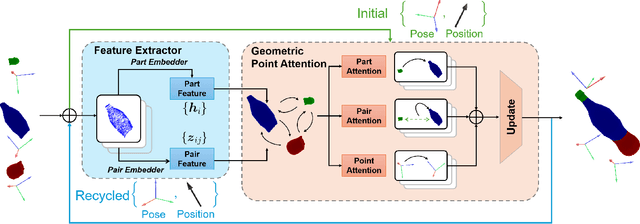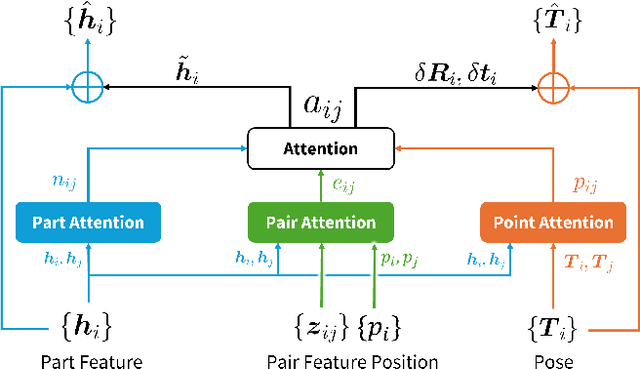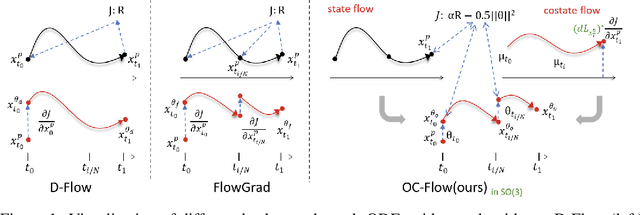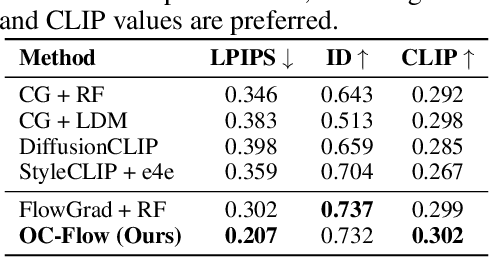Ge Liu
From Supervision to Exploration: What Does Protein Language Model Learn During Reinforcement Learning?
Oct 02, 2025Abstract:Protein language models (PLMs) have advanced computational protein science through large-scale pretraining and scalable architectures. In parallel, reinforcement learning (RL) has broadened exploration and enabled precise multi-objective optimization in protein design. Yet whether RL can push PLMs beyond their pretraining priors to uncover latent sequence-structure-function rules remains unclear. We address this by pairing RL with PLMs across four domains: antimicrobial peptide design, kinase variant optimization, antibody engineering, and inverse folding. Using diverse RL algorithms and model classes, we ask if RL improves sampling efficiency and, more importantly, if it reveals capabilities not captured by supervised learning. Across benchmarks, RL consistently boosts success rates and sample efficiency. Performance follows a three-factor interaction: task headroom, reward fidelity, and policy capacity jointly determine gains. When rewards are accurate and informative, policies have sufficient capacity, and tasks leave room beyond supervised baselines, improvements scale; when rewards are noisy or capacity is constrained, gains saturate despite exploration. This view yields practical guidance for RL in protein design: prioritize reward modeling and calibration before scaling policy size, match algorithm and regularization strength to task difficulty, and allocate capacity where marginal gains are largest. Implementation is available at https://github.com/chq1155/RL-PLM.
Flow Matching Meets Biology and Life Science: A Survey
Jul 23, 2025Abstract:Over the past decade, advances in generative modeling, such as generative adversarial networks, masked autoencoders, and diffusion models, have significantly transformed biological research and discovery, enabling breakthroughs in molecule design, protein generation, drug discovery, and beyond. At the same time, biological applications have served as valuable testbeds for evaluating the capabilities of generative models. Recently, flow matching has emerged as a powerful and efficient alternative to diffusion-based generative modeling, with growing interest in its application to problems in biology and life sciences. This paper presents the first comprehensive survey of recent developments in flow matching and its applications in biological domains. We begin by systematically reviewing the foundations and variants of flow matching, and then categorize its applications into three major areas: biological sequence modeling, molecule generation and design, and peptide and protein generation. For each, we provide an in-depth review of recent progress. We also summarize commonly used datasets and software tools, and conclude with a discussion of potential future directions. The corresponding curated resources are available at https://github.com/Violet24K/Awesome-Flow-Matching-Meets-Biology.
ProteinZero: Self-Improving Protein Generation via Online Reinforcement Learning
Jun 09, 2025Abstract:Protein generative models have shown remarkable promise in protein design but still face limitations in success rate, due to the scarcity of high-quality protein datasets for supervised pretraining. We present ProteinZero, a novel framework that enables scalable, automated, and continuous self-improvement of the inverse folding model through online reinforcement learning. To achieve computationally tractable online feedback, we introduce efficient proxy reward models based on ESM-fold and a novel rapid ddG predictor that significantly accelerates evaluation speed. ProteinZero employs a general RL framework balancing multi-reward maximization, KL-divergence from a reference model, and a novel protein-embedding level diversity regularization that prevents mode collapse while promoting higher sequence diversity. Through extensive experiments, we demonstrate that ProteinZero substantially outperforms existing methods across every key metric in protein design, achieving significant improvements in structural accuracy, designability, thermodynamic stability, and sequence diversity. Most impressively, ProteinZero reduces design failure rates by approximately 36% - 48% compared to widely-used methods like ProteinMPNN, ESM-IF and InstructPLM, consistently achieving success rates exceeding 90% across diverse and complex protein folds. Notably, the entire RL run on CATH-4.3 can be done with a single 8 X GPU node in under 3 days, including reward computation. Our work establishes a new paradigm for protein design where models evolve continuously from their own generated outputs, opening new possibilities for exploring the vast protein design space.
Variational Supervised Contrastive Learning
Jun 09, 2025Abstract:Contrastive learning has proven to be highly efficient and adaptable in shaping representation spaces across diverse modalities by pulling similar samples together and pushing dissimilar ones apart. However, two key limitations persist: (1) Without explicit regulation of the embedding distribution, semantically related instances can inadvertently be pushed apart unless complementary signals guide pair selection, and (2) excessive reliance on large in-batch negatives and tailored augmentations hinders generalization. To address these limitations, we propose Variational Supervised Contrastive Learning (VarCon), which reformulates supervised contrastive learning as variational inference over latent class variables and maximizes a posterior-weighted evidence lower bound (ELBO) that replaces exhaustive pair-wise comparisons for efficient class-aware matching and grants fine-grained control over intra-class dispersion in the embedding space. Trained exclusively on image data, our experiments on CIFAR-10, CIFAR-100, ImageNet-100, and ImageNet-1K show that VarCon (1) achieves state-of-the-art performance for contrastive learning frameworks, reaching 79.36% Top-1 accuracy on ImageNet-1K and 78.29% on CIFAR-100 with a ResNet-50 encoder while converging in just 200 epochs; (2) yields substantially clearer decision boundaries and semantic organization in the embedding space, as evidenced by KNN classification, hierarchical clustering results, and transfer-learning assessments; and (3) demonstrates superior performance in few-shot learning than supervised baseline and superior robustness across various augmentation strategies.
mCLM: A Function-Infused and Synthesis-Friendly Modular Chemical Language Model
May 18, 2025Abstract:Despite their ability to understand chemical knowledge and accurately generate sequential representations, large language models (LLMs) remain limited in their capacity to propose novel molecules with drug-like properties. In addition, the molecules that LLMs propose can often be challenging to make in the lab. To more effectively enable the discovery of functional small molecules, LLMs need to learn a molecular language. However, LLMs are currently limited by encoding molecules from atoms. In this paper, we argue that just like tokenizing texts into (sub-)word tokens instead of characters, molecules should be decomposed and reassembled at the level of functional building blocks, i.e., parts of molecules that bring unique functions and serve as effective building blocks for real-world automated laboratory synthesis. This motivates us to propose mCLM, a modular Chemical-Language Model tokenizing molecules into building blocks and learning a bilingual language model of both natural language descriptions of functions and molecule building blocks. By reasoning on such functional building blocks, mCLM guarantees to generate efficiently synthesizable molecules thanks to recent progress in block-based chemistry, while also improving the functions of molecules in a principled manner. In experiments on 430 FDA-approved drugs, we find mCLM capable of significantly improving 5 out of 6 chemical functions critical to determining drug potentials. More importantly, mCLM can reason on multiple functions and improve the FDA-rejected drugs (``fallen angels'') over multiple iterations to greatly improve their shortcomings.
$α$-Flow: A Unified Framework for Continuous-State Discrete Flow Matching Models
Apr 14, 2025Abstract:Recent efforts have extended the flow-matching framework to discrete generative modeling. One strand of models directly works with the continuous probabilities instead of discrete tokens, which we colloquially refer to as Continuous-State Discrete Flow Matching (CS-DFM). Existing CS-DFM models differ significantly in their representations and geometric assumptions. This work presents a unified framework for CS-DFM models, under which the existing variants can be understood as operating on different $\alpha$-representations of probabilities. Building upon the theory of information geometry, we introduce $\alpha$-Flow, a family of CS-DFM models that adheres to the canonical $\alpha$-geometry of the statistical manifold, and demonstrate its optimality in minimizing the generalized kinetic energy. Theoretically, we show that the flow matching loss for $\alpha$-flow establishes a unified variational bound for the discrete negative log-likelihood. We comprehensively evaluate different instantiations of $\alpha$-flow on various discrete generation domains to demonstrate their effectiveness in discrete generative modeling, including intermediate values whose geometries have never been explored before. $\alpha$-flow significantly outperforms its discrete-state counterpart in image and protein sequence generation and better captures the entropy in language modeling.
Online Reward-Weighted Fine-Tuning of Flow Matching with Wasserstein Regularization
Feb 09, 2025



Abstract:Recent advancements in reinforcement learning (RL) have achieved great success in fine-tuning diffusion-based generative models. However, fine-tuning continuous flow-based generative models to align with arbitrary user-defined reward functions remains challenging, particularly due to issues such as policy collapse from overoptimization and the prohibitively high computational cost of likelihoods in continuous-time flows. In this paper, we propose an easy-to-use and theoretically sound RL fine-tuning method, which we term Online Reward-Weighted Conditional Flow Matching with Wasserstein-2 Regularization (ORW-CFM-W2). Our method integrates RL into the flow matching framework to fine-tune generative models with arbitrary reward functions, without relying on gradients of rewards or filtered datasets. By introducing an online reward-weighting mechanism, our approach guides the model to prioritize high-reward regions in the data manifold. To prevent policy collapse and maintain diversity, we incorporate Wasserstein-2 (W2) distance regularization into our method and derive a tractable upper bound for it in flow matching, effectively balancing exploration and exploitation of policy optimization. We provide theoretical analyses to demonstrate the convergence properties and induced data distributions of our method, establishing connections with traditional RL algorithms featuring Kullback-Leibler (KL) regularization and offering a more comprehensive understanding of the underlying mechanisms and learning behavior of our approach. Extensive experiments on tasks including target image generation, image compression, and text-image alignment demonstrate the effectiveness of our method, where our method achieves optimal policy convergence while allowing controllable trade-offs between reward maximization and diversity preservation.
Hotspot-Driven Peptide Design via Multi-Fragment Autoregressive Extension
Nov 26, 2024



Abstract:Peptides, short chains of amino acids, interact with target proteins, making them a unique class of protein-based therapeutics for treating human diseases. Recently, deep generative models have shown great promise in peptide generation. However, several challenges remain in designing effective peptide binders. First, not all residues contribute equally to peptide-target interactions. Second, the generated peptides must adopt valid geometries due to the constraints of peptide bonds. Third, realistic tasks for peptide drug development are still lacking. To address these challenges, we introduce PepHAR, a hot-spot-driven autoregressive generative model for designing peptides targeting specific proteins. Building on the observation that certain hot spot residues have higher interaction potentials, we first use an energy-based density model to fit and sample these key residues. Next, to ensure proper peptide geometry, we autoregressively extend peptide fragments by estimating dihedral angles between residue frames. Finally, we apply an optimization process to iteratively refine fragment assembly, ensuring correct peptide structures. By combining hot spot sampling with fragment-based extension, our approach enables de novo peptide design tailored to a target protein and allows the incorporation of key hot spot residues into peptide scaffolds. Extensive experiments, including peptide design and peptide scaffold generation, demonstrate the strong potential of PepHAR in computational peptide binder design.
Geometric Point Attention Transformer for 3D Shape Reassembly
Nov 26, 2024



Abstract:Shape assembly, which aims to reassemble separate parts into a complete object, has gained significant interest in recent years. Existing methods primarily rely on networks to predict the poses of individual parts, but often fail to effectively capture the geometric interactions between the parts and their poses. In this paper, we present the Geometric Point Attention Transformer (GPAT), a network specifically designed to address the challenges of reasoning about geometric relationships. In the geometric point attention module, we integrate both global shape information and local pairwise geometric features, along with poses represented as rotation and translation vectors for each part. To enable iterative updates and dynamic reasoning, we introduce a geometric recycling scheme, where each prediction is fed into the next iteration for refinement. We evaluate our model on both the semantic and geometric assembly tasks, showing that it outperforms previous methods in absolute pose estimation, achieving accurate pose predictions and high alignment accuracy.
Training Free Guided Flow Matching with Optimal Control
Oct 23, 2024



Abstract:Controlled generation with pre-trained Diffusion and Flow Matching models has vast applications. One strategy for guiding ODE-based generative models is through optimizing a target loss $R(x_1)$ while staying close to the prior distribution. Along this line, some recent work showed the effectiveness of guiding flow model by differentiating through its ODE sampling process. Despite the superior performance, the theoretical understanding of this line of methods is still preliminary, leaving space for algorithm improvement. Moreover, existing methods predominately focus on Euclidean data manifold, and there is a compelling need for guided flow methods on complex geometries such as SO(3), which prevails in high-stake scientific applications like protein design. We present OC-Flow, a general and theoretically grounded training-free framework for guided flow matching using optimal control. Building upon advances in optimal control theory, we develop effective and practical algorithms for solving optimal control in guided ODE-based generation and provide a systematic theoretical analysis of the convergence guarantee in both Euclidean and SO(3). We show that existing backprop-through-ODE methods can be interpreted as special cases of Euclidean OC-Flow. OC-Flow achieved superior performance in extensive experiments on text-guided image manipulation, conditional molecule generation, and all-atom peptide design.
 Add to Chrome
Add to Chrome Add to Firefox
Add to Firefox Add to Edge
Add to Edge